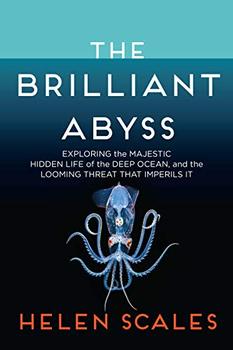Summary | Excerpt | Reviews | Beyond the book | Read-Alikes | Genres & Themes | Author Bio

The World's Rarest Foods and Why We Need to Save Them
by Dan SaladinoA non-fiction book written with all the compassion of an activist and all the precision of an academic (with none of the jargon or pedantry), Eating to Extinction: The World's Rarest Foods and Why We Need to Save Them is a journey around the globe that will enlighten, educate and, at times, frighten you. Dan Saladino has compiled information on some of the most wondrous and unique foods that, until the growth of industry agriculture, were not considered "unique" at all. In fact, many of the plants and animals the author introduces to his readers were staples of nutrition for early humans.
The book is written in easy-to-understand language, and readers will finish every chapter feeling they have learned something new and valuable in an almost effortless way. What, exactly, they will learn are the histories and stories of diverse and important foods that are in danger of never being tasted again. Organized based on food category (Wild, Cereal, Vegetable, Meat, From the Sea, Fruit, Cheese, Alcohol, Stimulants, Sweet), each chapter opens a window into the loss of food and food sources, and also the lives and cultures surrounding those foods and their preparations.
Saladino begins with an introduction that provides a timeline of how subsistence farming became focused on large-scale agricultural production, and how agricultural production became the mechanized food industry. While not placing the book within a political framework, he touches upon issues of deforestation, government policy and warfare for their roles in driving this transition. Saladino explains how the constant pursuit of bigger, more prolific and cheaper food sources or hybrids has led to the exploitation of land, depletion of original (parent) plants and the driving out of animals that once shared a symbiotic relationship with their human counterparts. After his brief but revealing history of farming, migration and industrialization, Saladino begins a tour of obscure, and not-so-obscure, locations around the world, giving readers a chance to learn about a variety of plants, animals and traditions that are in danger of extinction.
Stopping in Tanzania, he introduces readers to the Hadza people (see Beyond the Book), and the "indicator bird" — otherwise known as the greater honeyguide. The Hadza depend on the honey of wild bees for its substantial nutrition, as well as for its healing properties. Because the hives are difficult and time-consuming to locate, the Hadza have developed a symbiotic relationship with the honeyguide. The honeyguide wants the wax from the hive but cannot access it without the risk of being stung to death. The Hadza have perfected the use of smoke to subdue the bees, making them the perfect hunting companions for the honeyguide. Unfortunately, a combination of climate change and desertification due to extreme crop irrigation practices is threatening the bees, the quality of nectar, the birds and the entire diet and way of life of the Hadza.
We leave Tanzania and head to Australia where, Saladino writes, deforestation and the overgrazing of animals has contributed to the destruction of the sacred, ancient plant murnong. A flower with edible tuberous roots that was once an important source of food and medicinal treatment for Aboriginal people, murnong was nearly extinct by the 1800s. Now, protectors of the land and plant struggle to preserve not only the botanical itself, but the traditions and meanings that were built around it. Similar stories exist regarding a wide array of vegetables, fruits, fauna and other sustenance sources.
No continent is left out, no people spared the threat of looming extinction of traditional, ancient and nutritious foods. Red peas in Georgia, bear root in Colorado, salmon off the coasts of Scotland and Ireland, apples across Kazakhstan, oranges in Ribera, Sicily, Lambic beer in Belgium and many more plants, alcohols and animals are all in danger. Hopefully, with the help of Saladino's efforts, more attention will be brought to the issue of food extinction. While he offers no simple solutions, the information he provides, coupled with his brilliant storytelling, will no doubt leave readers considering the impacts of government policies, warfare, colonization and capitalism on the environment and on the indigenous people and cultures that have inhabited lands across the globe for millennia. The seed savers, the protectors of tradition and the land guardians on every continent might have a greater chance of saving the foods of the past.
This book is a pleasurable read that comes in at over 400 densely packed but easy-to-digest pages. Readers who like learning about food, ecology, cultures and biodiversity will enjoy Eating to Extinction.
![]() This review was originally published in The BookBrowse Review in February 2022, and has been updated for the
February 2023 edition.
Click here to go to this issue.
This review was originally published in The BookBrowse Review in February 2022, and has been updated for the
February 2023 edition.
Click here to go to this issue.

If you liked Eating to Extinction, try these:

by Helen Scales
Published 2022
"The oceans have always shaped human lives," writes marine biologist Helen Scales in her vibrant new book The Brilliant Abyss, but the surface and the very edges have so far mattered the most. "However, one way or another, the future ocean is the deep ocean."

by Tony Hiss
Published 2022
An urgent, resounding call to protect 50 percent of the earth's land by 2050--thereby saving millions of its species--and a candid assessment of the health of our planet and our role in conserving it, from the award-winning author of The Experience of Place and veteran New Yorker staff writer.
Your guide toexceptional books
BookBrowse seeks out and recommends the best in contemporary fiction and nonfiction—books that not only engage and entertain but also deepen our understanding of ourselves and the world around us.